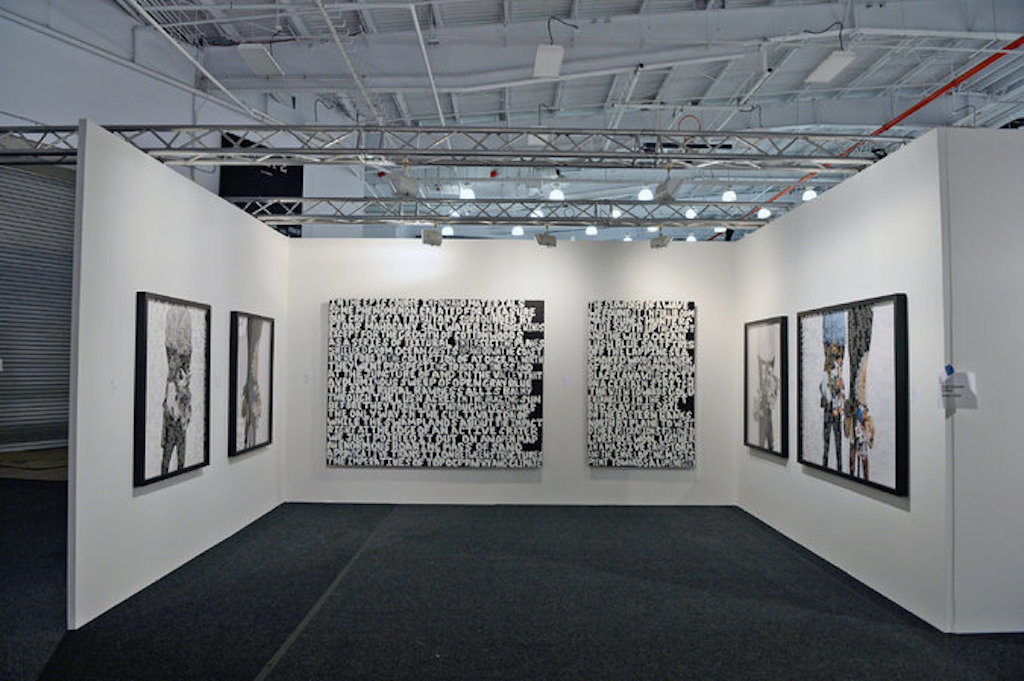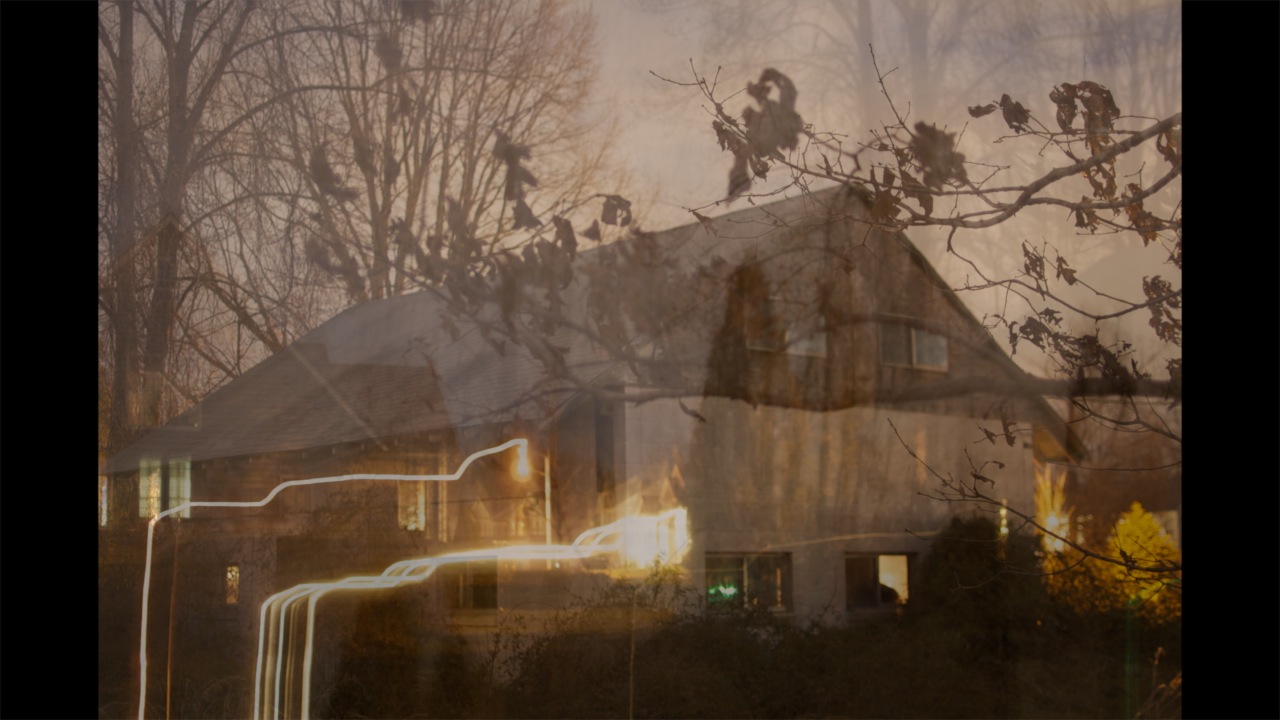Todd Keyser Interviews Baltimore-based Artist Bart O’Reilly about his Trilogy of Videos:
An Imagined History of an Old Shed, The History and Objects of an Imaginary Shed, and Inside
Bart O’Reilly is an artist and painter whose trilogy of videos brings the viewer into moments of contemplation centered on everyday moments. With the addition of his own poetic narrative, O’Reilly asks the spectator to reconsider a relationship to the ordinary. The artist constructs videos that unfold in time with vocal narration, broken up by large sections of silence except for the ambient noise around an old shed.
There is a lot of space to freely invent associations with the content of the video and O’Reilly’s construction forces the viewer to be a part of the creative process. As a result, the viewer shares in the authorship of the narrative. In addition, O’Reilly’s employs free verse in the videos to pose questions about the nature and meaning of the old shed, especially after it is filled with the artist’s objects: a white painted tree branch, some old boxes and paint cans.
O’Reilly’s videos are a deep reflection on Modernism but reject the cynical, ironic, and deflated symbolism of the Postmodern era in search of an aesthetic that is more transcendent and celebratory of life’s intimate moments. The work also shows the influence of his own Irish countrymen James Joyce and Samuel Beckett.
A store front window projection, called City Project(ions): An Imagined Shed Trilogy by Bart O’Reilly are being screened at 3216 Eastern Avenue in the Highlandtown Arts District in Baltimore. The opening event was April 26th 10pm and screened Part One. Part two was projected at dusk to 1:30 am May 2nd -4th, and Part Three will screen from dusk to 1:30 am May 9th -11th.
Todd: What prompted these video pieces? Did you start out with the intent of making a three-part video or did they just organically come about that way?
Bart: These videos were made while I was reading Samuel Beckett’s trilogy of novels Molloy, Malone Dies, and The Unnamable and listening to and reading James Joyce’s Ulysses and Finnegan’s Wake. I always wanted it to be a trilogy of interconnected works. All of these works affected me deeply and I was very curious to discover that John Cage, another pivotal figure for me, in my interest in Mid-Century Irish and American Modernism, made a piece called Writing for the Second Time Through Finnegan’s Wake.
However, there is a personal narrative that weaves in and out that was crucial, particularly in relation to Beckett’s ‘Malone Dies.’ I imagined there to be interchangeability between a personal narrative and Beckett’s gorgeously minimal exploration of the last moments of a human being’s life. The events in my personal life were finding out that my mother had cancer and then losing her on July15th, 2013. An Imagined History of an Old Shed is really about imagining the site near my house in White Marsh, Maryland as the setting for Beckett’s ‘Malone Dies.’ In the novel, the location itself is somewhat ambiguous, so I enjoyed exploring this.
Todd: You mention that the works of Beckett and Joyce affected you deeply. Why is that?
Bart: Each author affected me for different reasons. I was initially drawn to Beckett’s reaction to Joyce. How do you follow the depth of knowledge, beauty and mastery of language in Joyce? Beckett chose to strip language and narrative down to its bones and celebrate quietly the beauty and despair of the human condition. I felt when reading ‘Malone Dies’ that I could imagine the site to be one of my own works because there was an openness that let me into the piece. I had a strange feeling that I had to act on this and the interest in constructing a narrative around this abandoned shed near my house.
Todd: There seems to be a sense of melancholy with Joyce. Beckett, on the other hand, appears to actively negate the beautiful use of language that Joyce employs, rather finding beauty in simplicity and plain structure. The narration of An Imagined History of an Old Shed seems to be a synthesis of the two styles. I really like this passage:
“An imagined history of an old shed by the side of the road sandwiched between two cookie cutter developments. In it we will look, like archeologists, to discover what was there what was left behind. But because we are artists we will use this to construct our own story. What will we find? What will it tell us? How will it effect our imagination? Let the place tell its own tale. Written in dust. An imagined history by the side of the road.” [The narration is followed by a noise like the flushing of water – image gets distorted – long pause in the audio.]
You know, while we were in school together I did not know you were interested in poetry.
Bart: I have always been very interested in poetry and literature, but really only began to investigate the works of these Irish authors in grad school. The focus on Bertolt Brecht in our MFA program made me aware of his theatrical device known as the A effect (alienation effect). It had a strong impact. The A effect, also known as breaking the fourth wall, allows the audience to realize, while experiencing the work, that the work itself is just an illusion. It has the intention of stopping the viewer from getting lost in the fantasy of the theatrical performance. By not allowing the viewer to escape, Brecht hoped that members of the audience would remain aware of their own circumstances and surroundings and be active participants rather than passive observers.
This introduction to 20th century theatre made me curious about Beckett. I had always been aware of his work growing up in Dublin, but my knowledge of it was pretty casual. Once I started seeing his plays on DVD and reading him, I saw that his work also had a strong minimalist bent. The sparse language and descriptions of place in Beckett are really what hooked me, particularly in the trilogy of novels. When I was at MICA, we were strongly encouraged to expand interests in areas other than a strictly visual tradition and I jumped right in. If it weren’t for my interest in painting around the time I started college, I probably would have studied English Literature. It is nice now to have the opportunity to combine both passions in a digital media format.
Todd: In part two of this trilogy titled The History and Objects of an Imaginary Shed, I felt that the emphasis shifted to the Romantic.
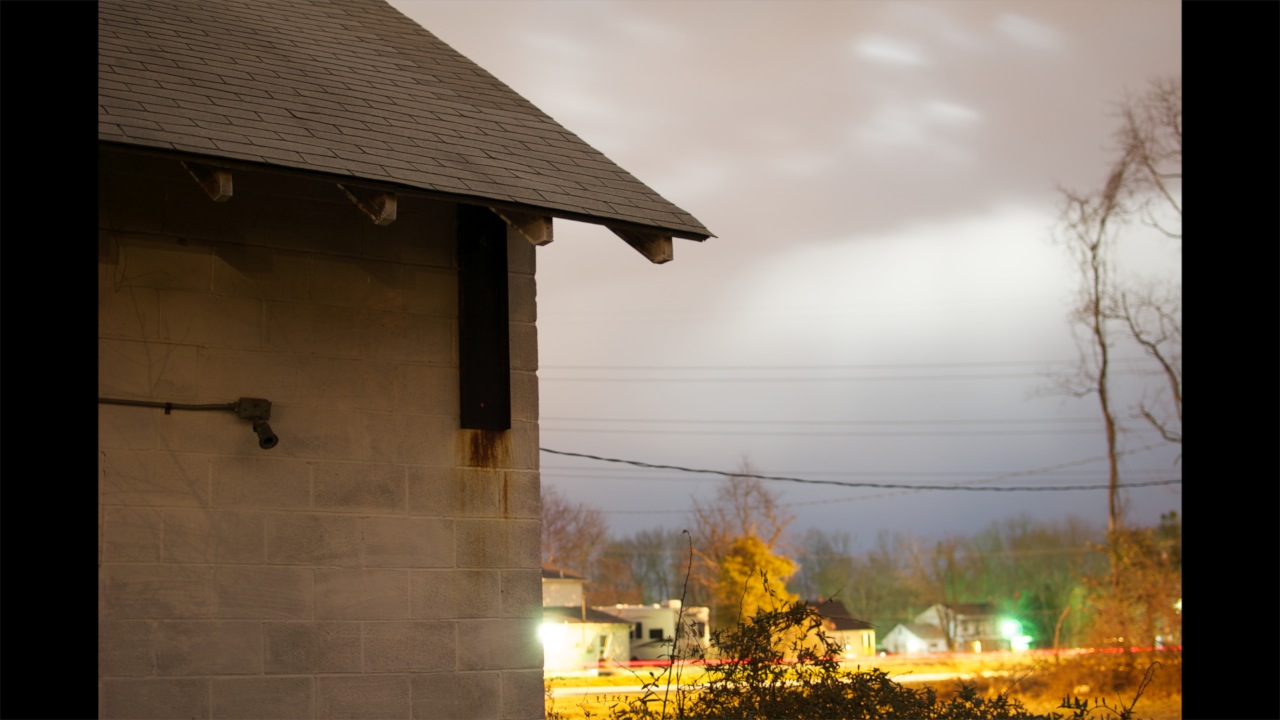
Bart: I think the interest in light is very Romantic. Its ever-changing subtleties and shifts are always a concern. However, I think I am drawn more towards to the beautiful rather than the sublime; to the everyday rather than the heroic. I feel like a Romantic trying to be a Realist sometimes.
Todd: These three videos seem to be not only a deep reflection on the subject of artistic creation but also the meaning of life. These are central questions that art, philosophy, science, and religion are always asking because we live in an indifferent world. One way of coping with this indifference is to construct meaning in it. What can you tell me about the use of Christian tropes in your work? They make an appearance during the beginning of your second video, The History and Objects of an Imaginary Shed.
Bart: I think the Christian tropes have been in my makeup since childhood. I remember being very taken with the Christian story as a young child. The idea of a trilogy brings to mind the concept of three persons in one God, or the three crosses on Calvary. I remember early on when I was studying painting at NCAD, someone said to me that the way I arranged and hung things was reflective of a Catholic upbringing. I was highly offended at the time and tried for many years to suppress this. Last week however I had the opportunity to screen this second piece in St. Ignatius Church in Baltimore. The work was projected on a screen on an altar and it seemed very appropriate. There was, I noticed, a ceremonial feeling about that piece, particularly in that space. Since I am interested in projecting in architectural spaces, my instinct is to embrace any moment where the work and its particular environment resonate with each other.
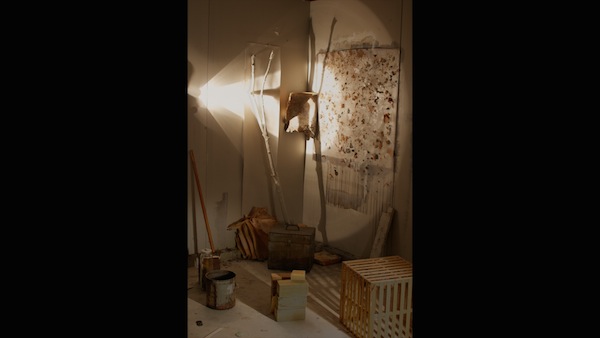
Todd: In addition to your use of symbolic words and phrases, the structuring of your three videos is similar to that of a dream. The structure of the narrative, in the words of Edwin Hong, functions like one that is “freed from pressures of strict chronology and verisimilitude.”
Bart: People have commented on a dream connection in my work before, but I dismissed it because I was not really interested in Surrealism or Freud. Again, I am rethinking this mainly as a result of ‘Finnegan’s Wake.’ Joyce’s intention was to write a novel reflective of a dream state. I think the lack of cohesive narrative in the Wake allowed me to let go of any search for meaning and read it in a way that is, I suppose, dream-like.
Todd: In the final video titled Inside, a hand-drawn white rectangle decomposes, leaving indexical traces. I have seen many of these kinds of characteristic markings make appearances in your paintings. These are paintings and works on paper that you make in the studio and then leave outside. It seems to me that these works carry more weight and symbolism than mere process art. The video urges me to make these assumptions about the individual paintings and drawings. They feel like fragments from the ‘imaginary shed.’ Is there any truth to this?
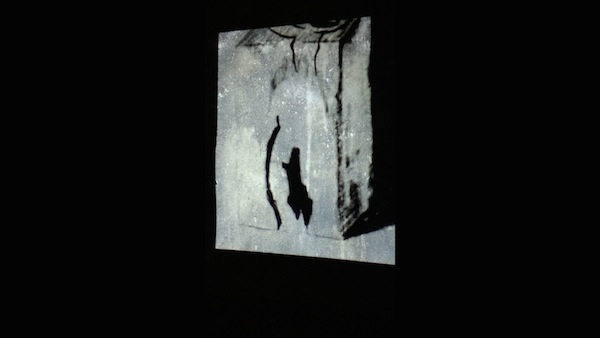
Bart: I suppose I am interested in the transformative process that takes place as things grow and ultimately degenerate. The block of wood is connected symbolically to the tree in the second piece. It is no longer a tree but is still potentially useful, perhaps as firewood. The use of ashes in the third video is also connected to the tree and the block of wood. The singular works (paintings and drawings) also deal with this. For example, leaving a landscape painting of snow out in freezing conditions attempts to reconnect the representation with the natural, physical process that inspired it.
Todd: Later, the video cuts to the inside of the shed in which the viewer sees paint cans and other objects sitting on top of what appears to be dirt. Within the video you have projected images of the scene onto itself, leaving the figure/ground incredibly ambiguous. Then, as the video progresses and you bring the camera close to the dirt, it takes on another quality altogether. It starts to resemble various views of outer space one might see through a telescope.
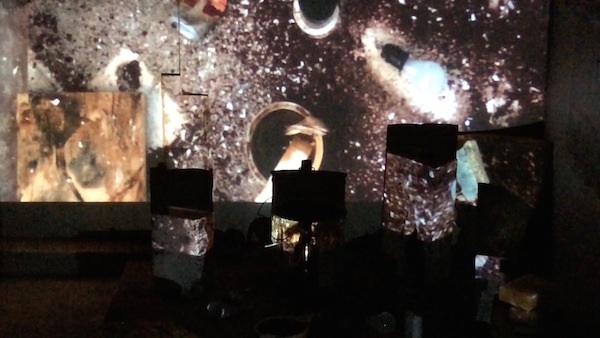
Bart: Yes, this is true about a connection to outer space. I am proposing that there are worlds within worlds or at least attempting to project this philosophy onto ordinary and everyday things. The void of space can be compared to the space inside an atom. Perhaps our own world makes up the fabric of something much larger. If the universe is in fact infinite, then our perception is dependent on our own position within time and space. I read recently that time may not even be a factor in the mechanics of the universe, rather that it is something inherently human because of our own mortality.
Todd: After the perceptual shift of the objects in the final video, you light the objects so they can be seen again for what they are – their utility becomes overpoweringly obvious. It’s like you’re dialing the intensity down and replacing it with a different kind of frequency, something more real than real. The experience of that catches me off guard. The audio in your video addresses this conundrum:
“ So what is it now that we’re inside? The dark or the light? No matter
– the presence and the absence go on. For order, for structure –
inside with the objects of an imaginary shed. To look, then
look again. What’s imagined about it? Forming a line of
what’s perceived. Particular – fact. The noises have gone.
It’s quiet and faint. But now for a voice or a whisper. A trip to the
caves and then under a bridge. Onward, final sound, inevitable,
constant, refined, rarified. So once I can touch it, its there.
once I can touch it, its there. I can’t see, no mind that’s uncertain.
It’s fixity – that’s what’s beyond sight. I forget its fixity that’ s
what’s beyond sight. It’s uncertain, it’s fixity, that’s what’s beyond
sight.”
Todd: Finally, let’s address the poetic verses towards the end of this video. I find the verses challenging and they make me think further beyond my initial encounter with your work. It is fitting that you finish the video off this way. It’s like you’re describing the cognitive process of seeing, what it is to apprehend that vision and to critically contemplate it. Basically, what it is to think. Then, you say that “fixity is beyond sight.” What do you mean by that?
Bart: What I was trying to get at was that our sense of transience might be a result of the way in which we perceive the light bouncing off things in the world rather than something inherent in the objects themselves. It was not so much that there is permanence in total darkness, but rather a proposition that our over-dependence on the faculty of sight detracts from the true nature of things. In this light, I thought it would be important to think about the sense of touch, which is often completely overlooked in the kind of training that we visual artists receive.
Todd: One thing that I walk away with regarding this trilogy is how it allows me to reconsider my own assumptions about the everyday. Additionally, it leads me to consider how one incorporates all these disciplines such as writing, painting, installation, and video. I find the fact that you’re not constrained by any medium or preconceived ideas about the artistic identity and the pressure of the art market wonderfully optimistic and refreshing.
Top Image: Still from An Imagined History of an Old Shed, 2013, Duration: 4 minutes and 23 seconds.
More information about the project:
Artist: Bart O’Reilly
Sponsors: Highlandtown Arts District (ha!), Highlandtown Main Street, Southeast CDC ha!
This project was curated by Sandra Abbott and organized as a part of “Pop-Up Highlandtown,” an initiative in partnership with CADVC-UMBC, Highlandtown Arts District, Highlandtown Main Street a program of the Southeast CDC. Site donated by Schultz Development, LLC. Translator: Jill Hoagland
Opening April 26th 10pm
Part One: dusk to 130am April 25th- 27th
Part Two: dusk to 1:30 am May 2nd -4th
Part Three: dusk to 1:30 am May 9th -11th
* Author Todd Keyser is a painter who lives and works in Philadelphia, where he is the Assistant Director at Gross McCleaf Gallery.
